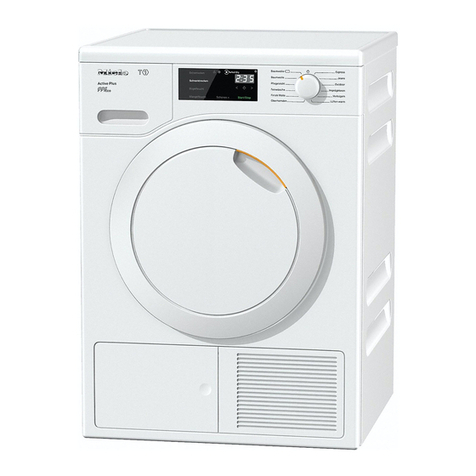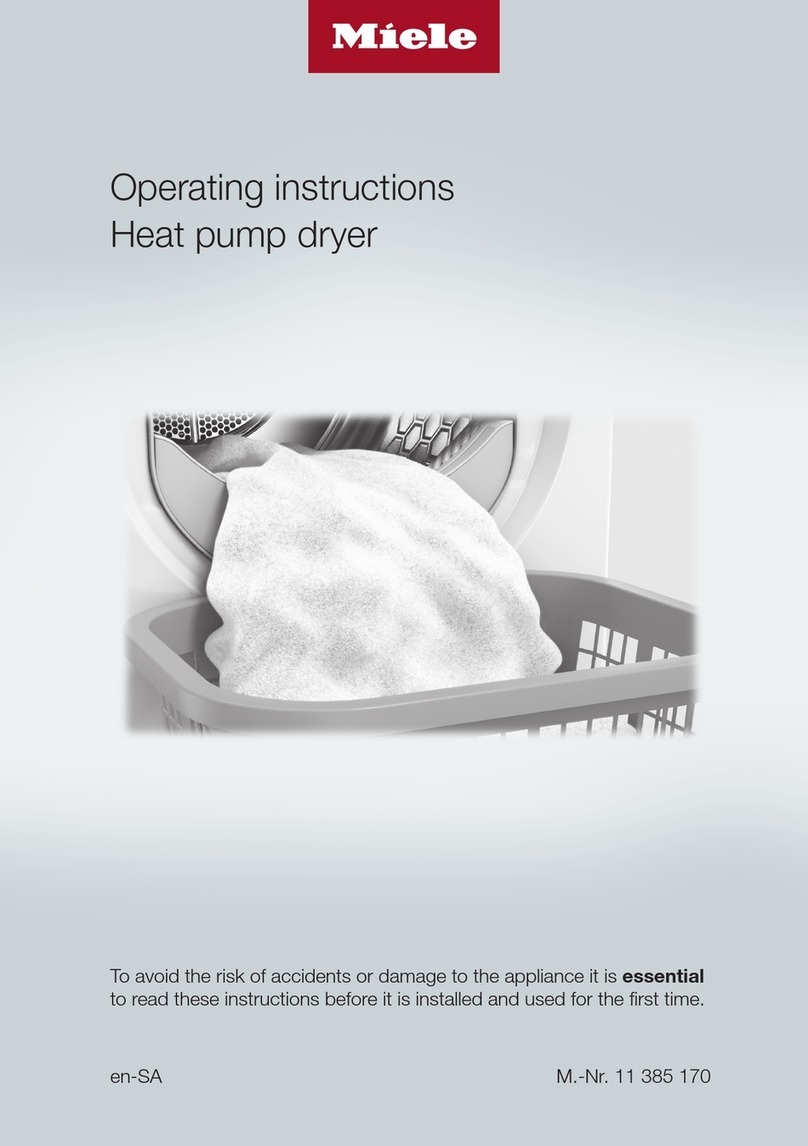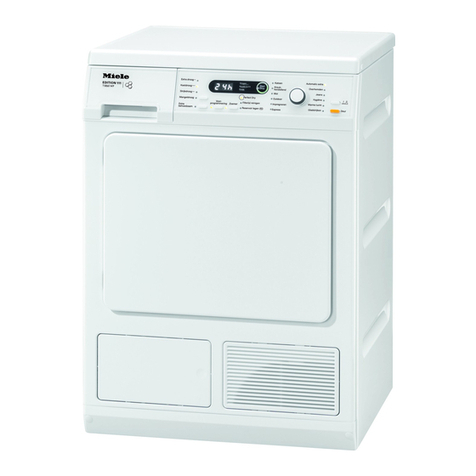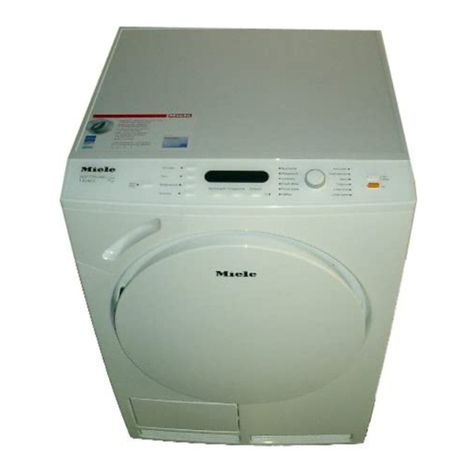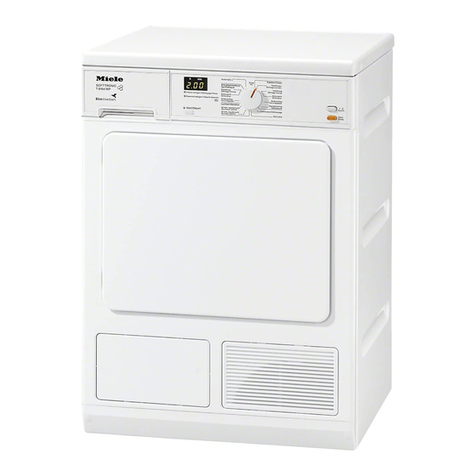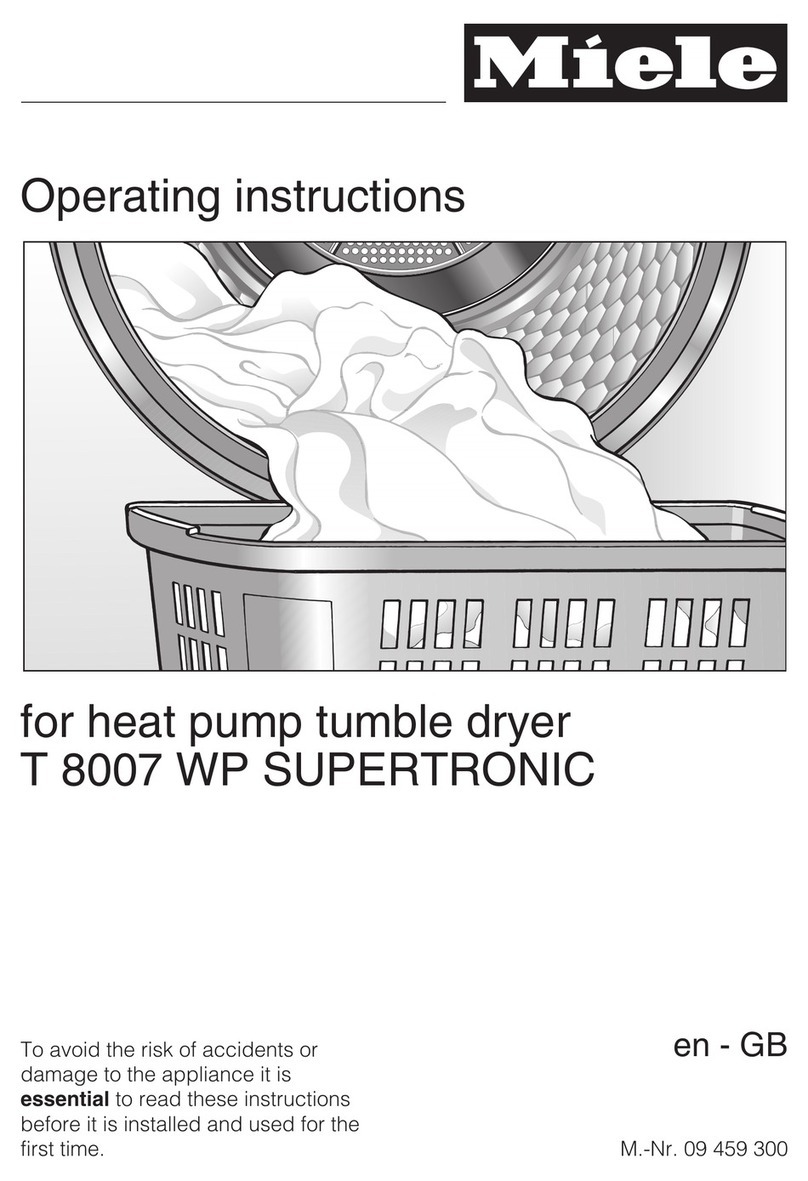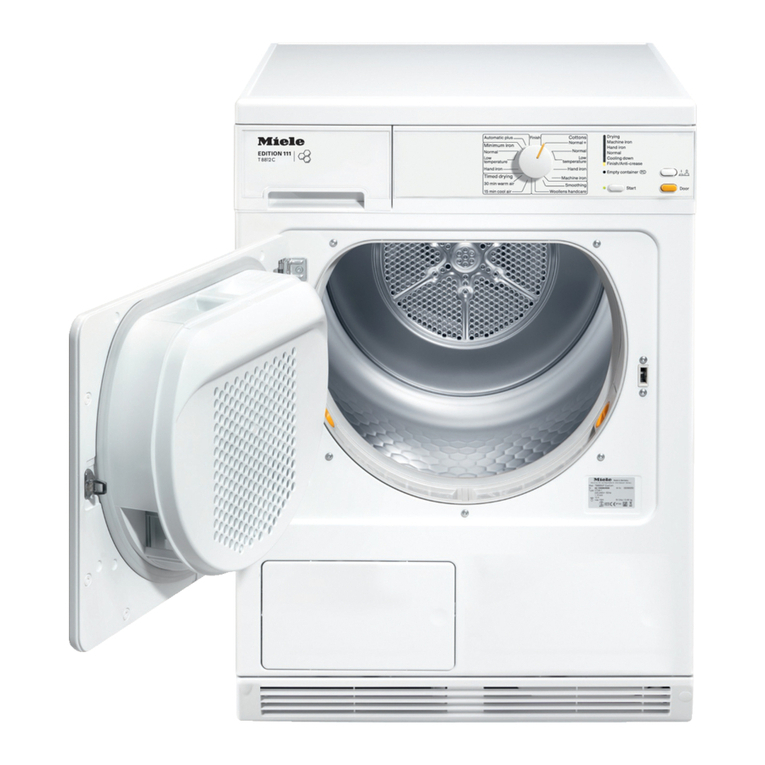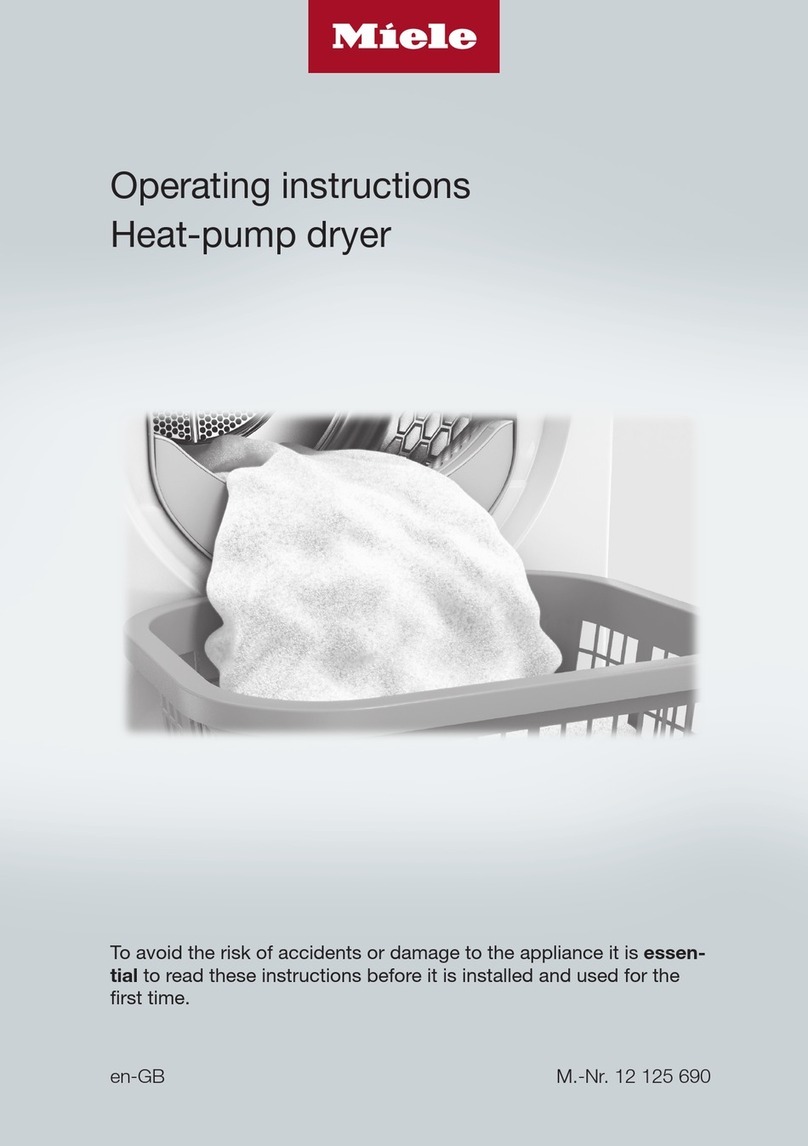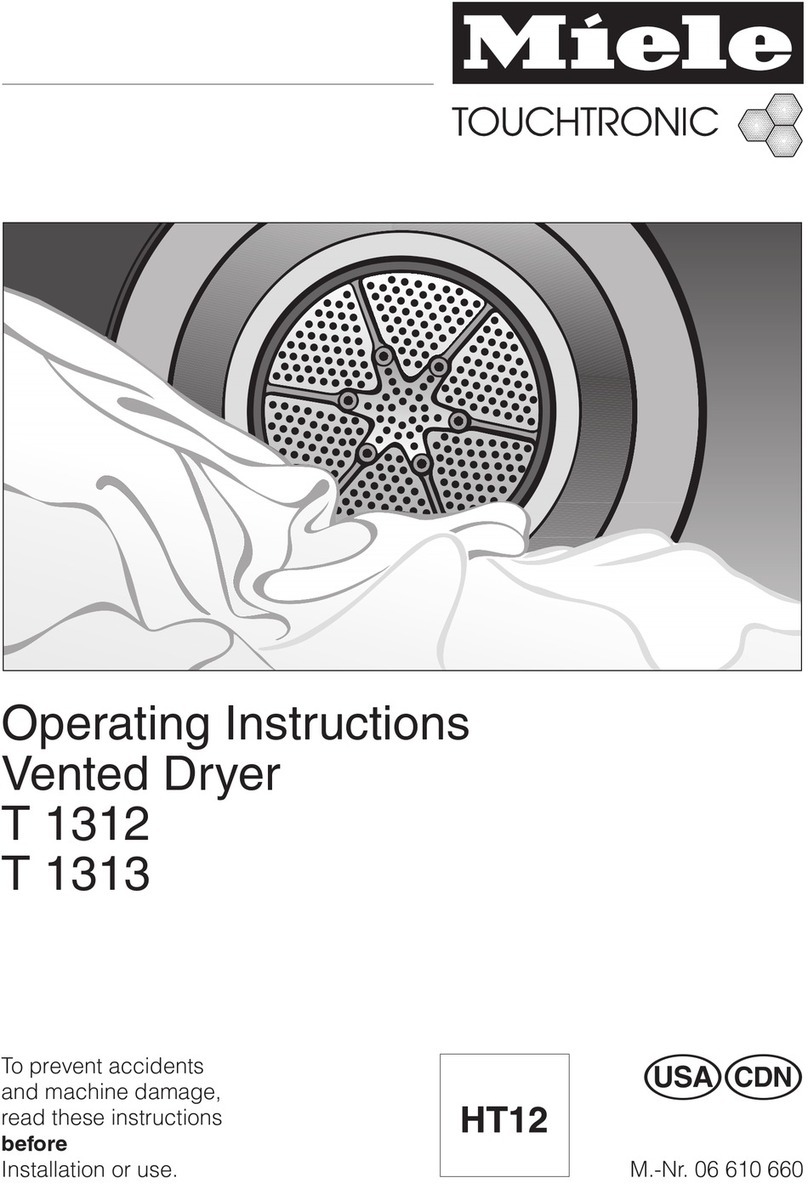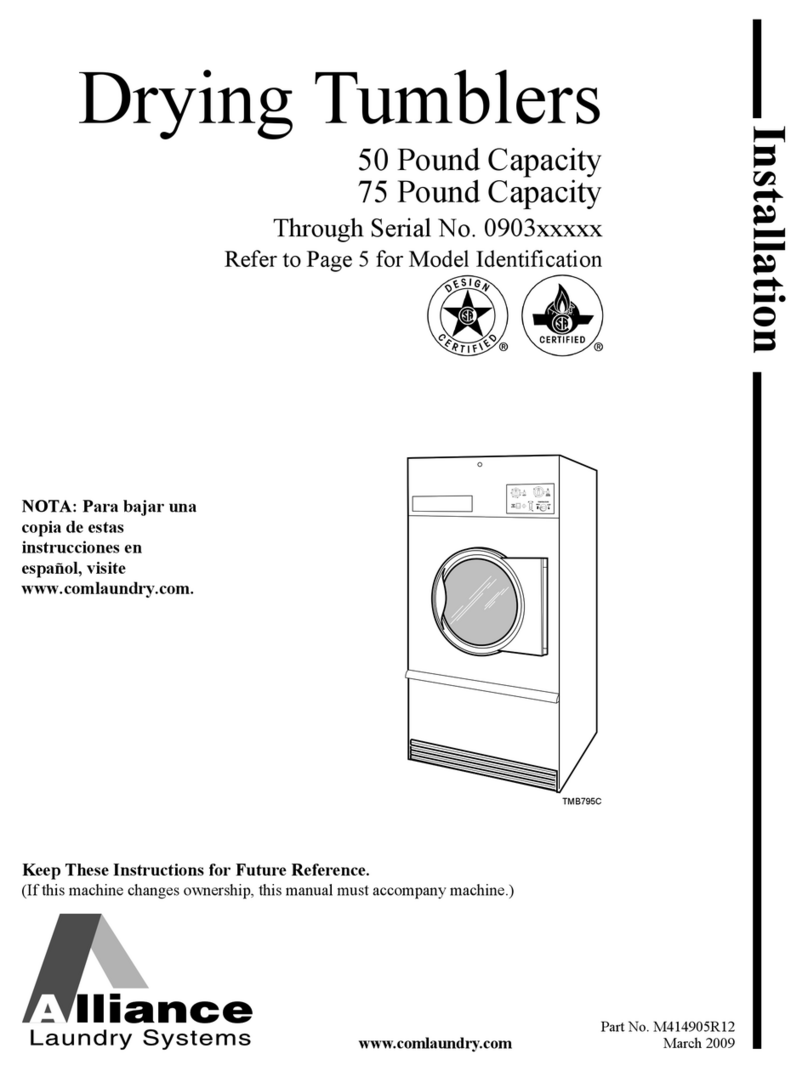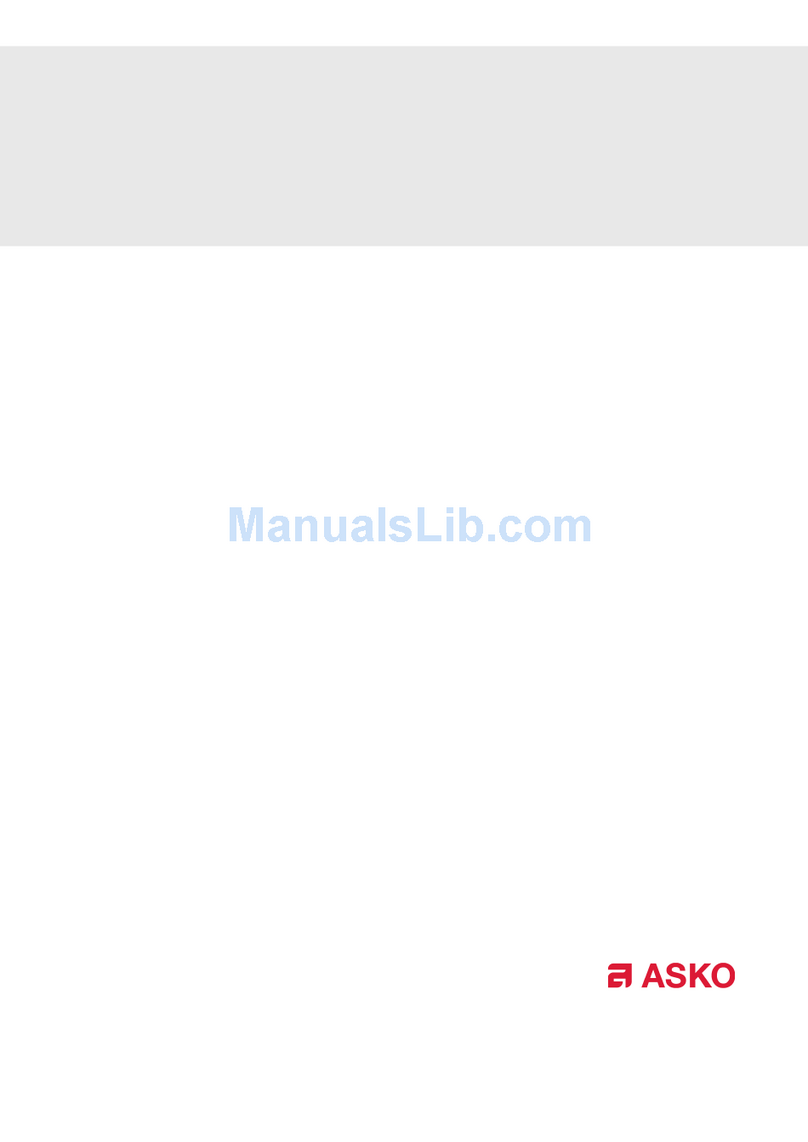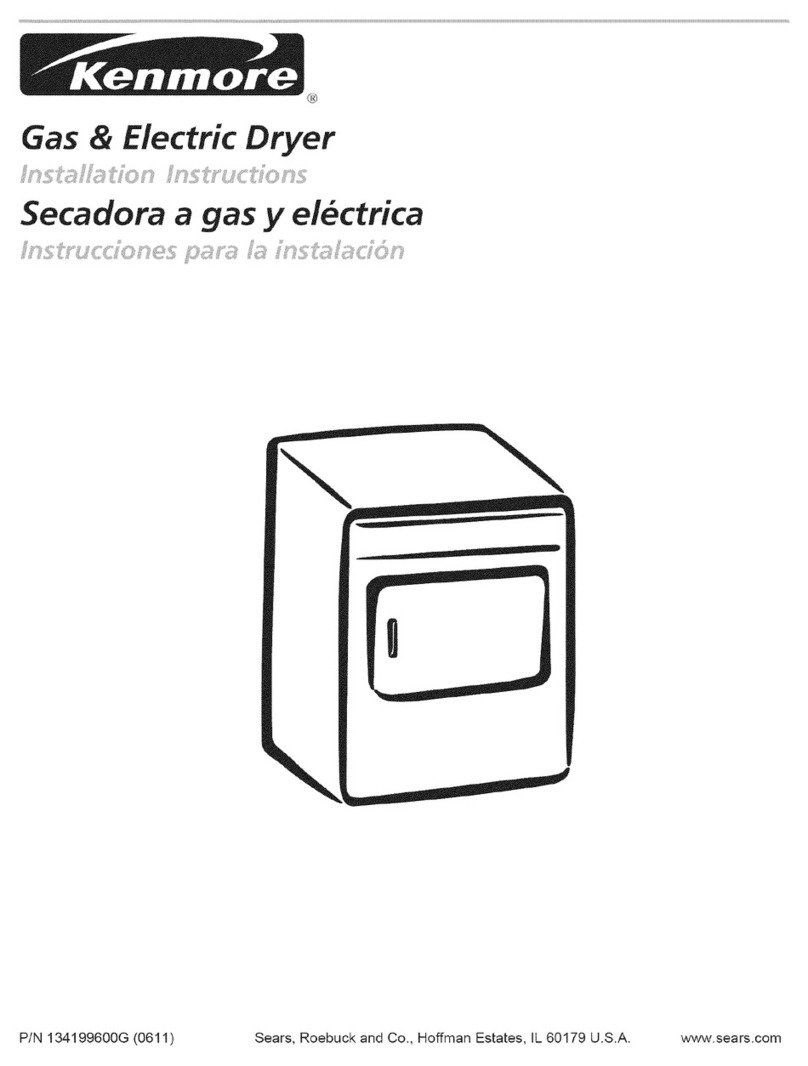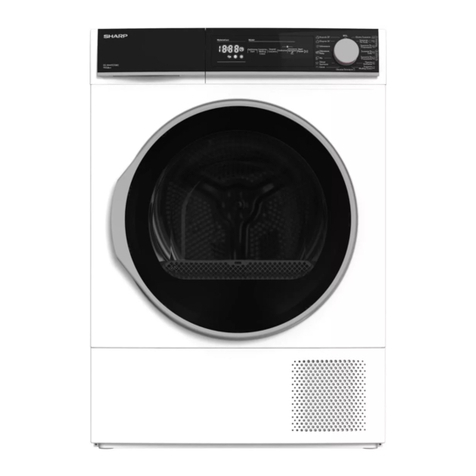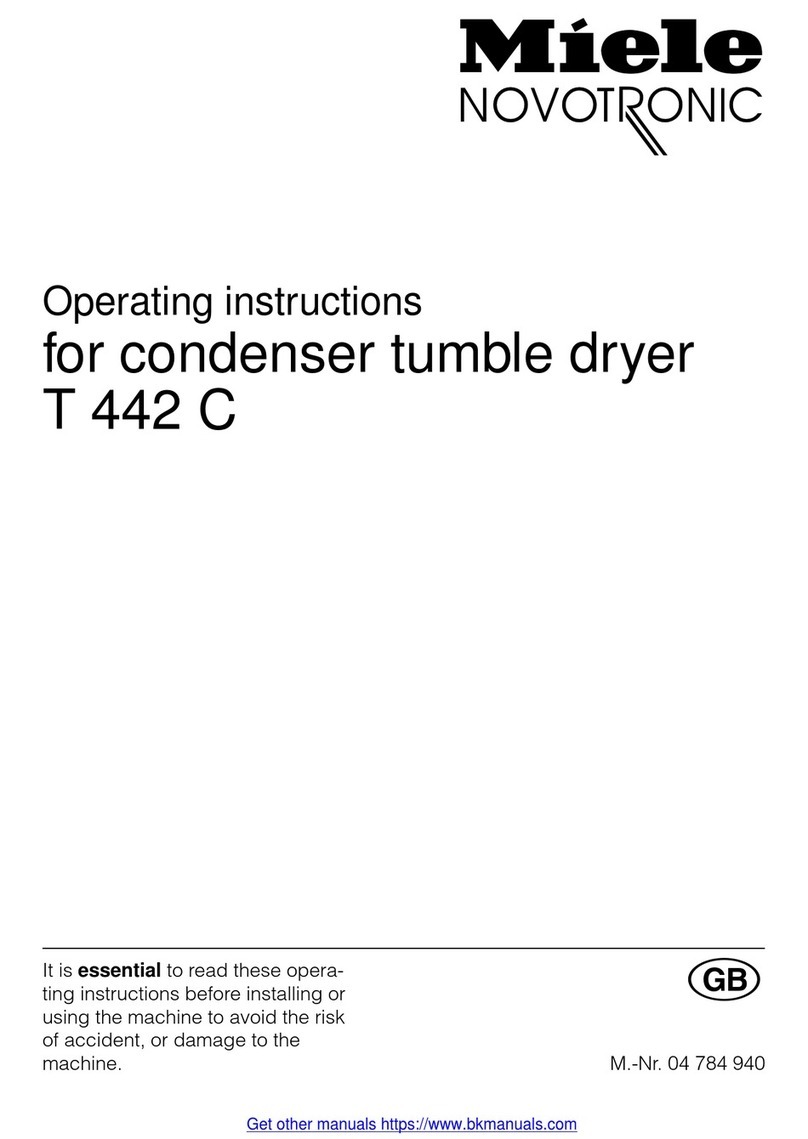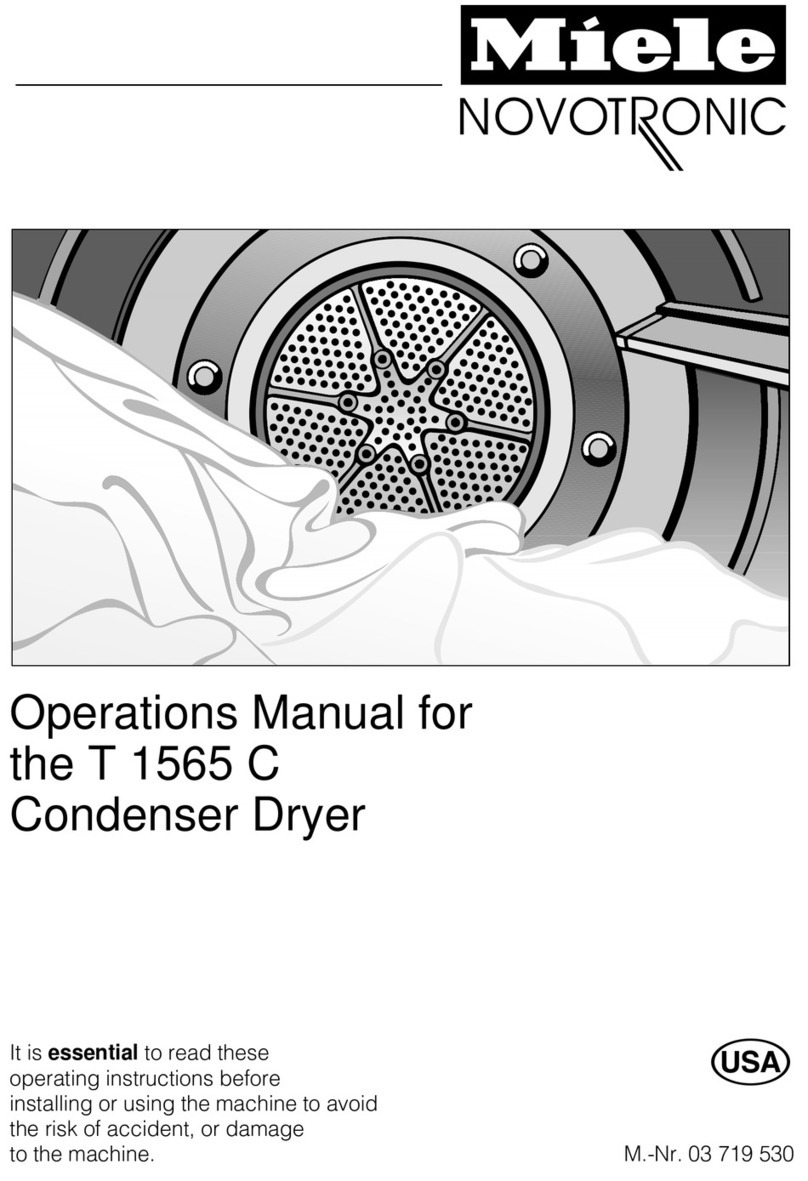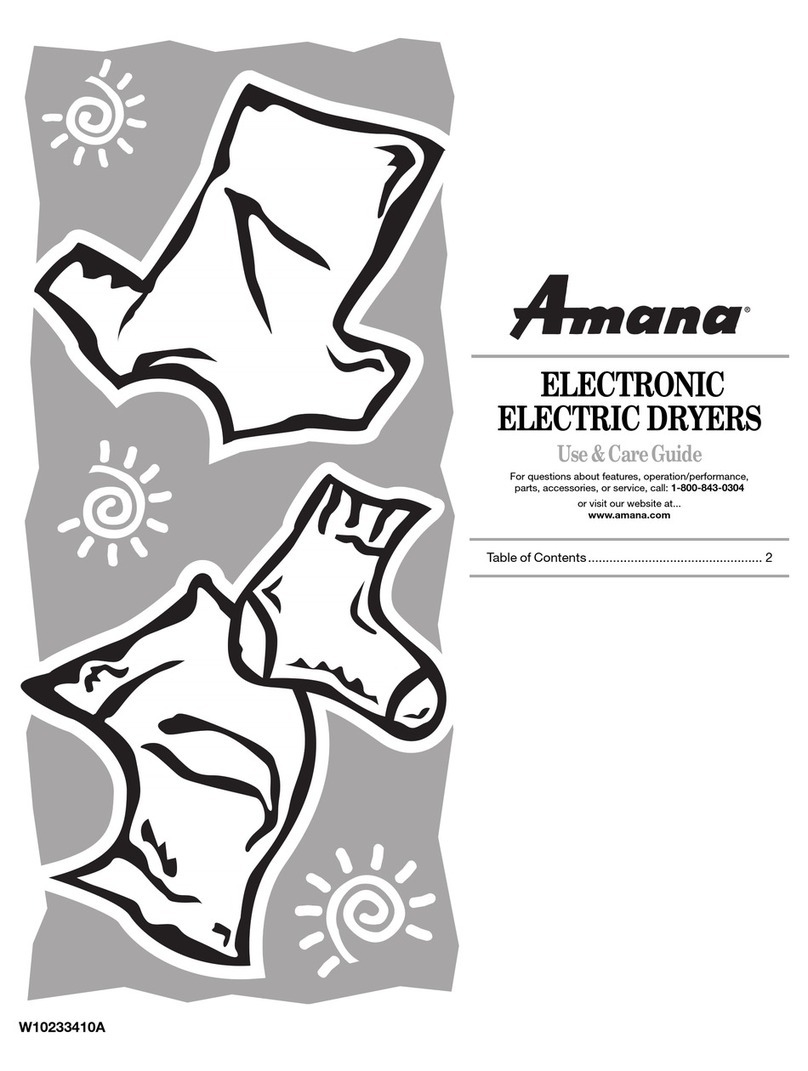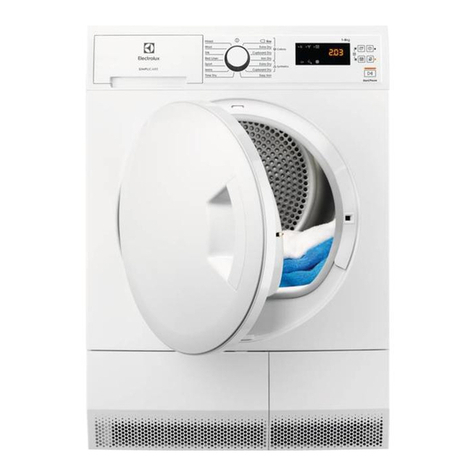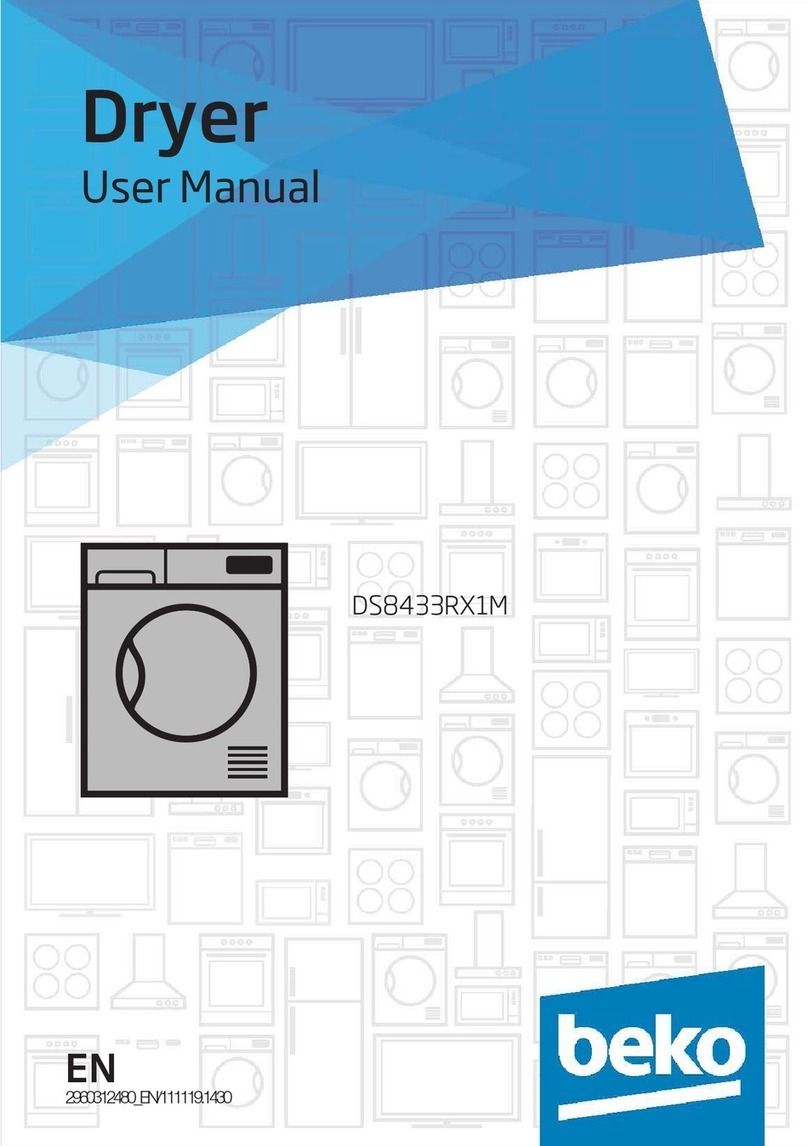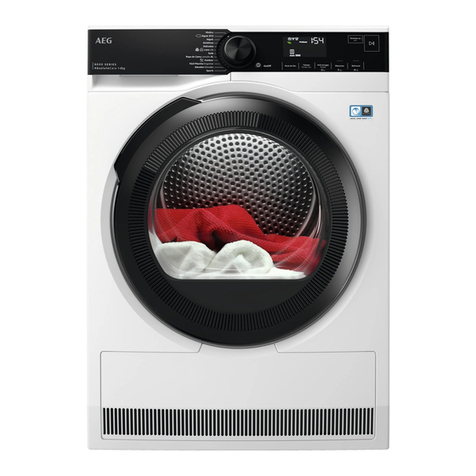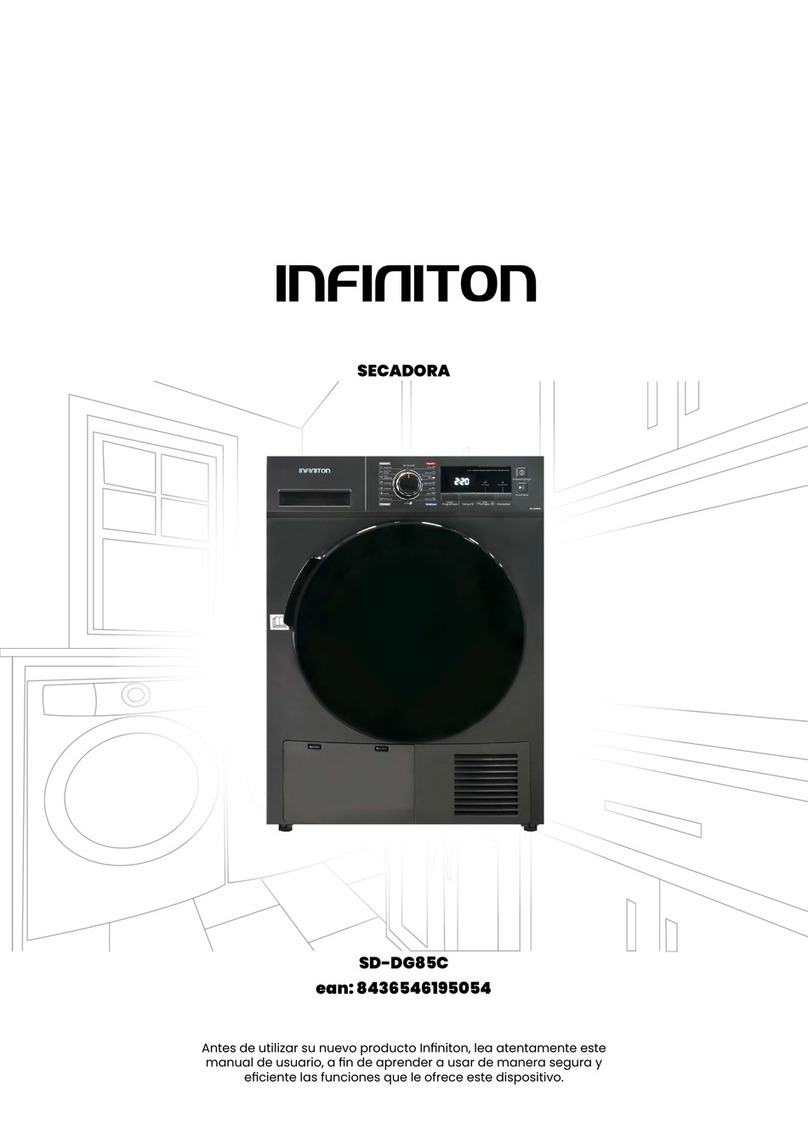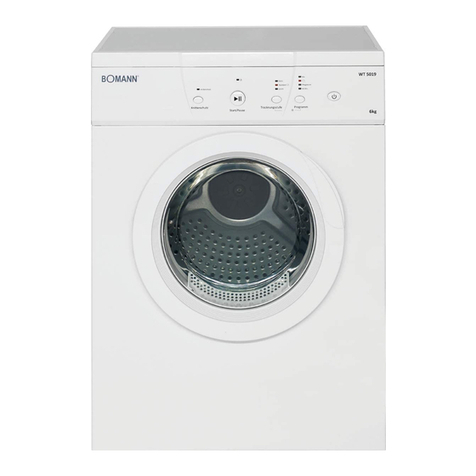Read the operating instructions
carefully before using this appliance
for the first time. They contain impor-
tant information about the safety, use
and maintenance of the appliance.
This way you will avoid the risk of
accidents and damage to the appli-
ance.
Keep these operating instructions in
a safe place and ensure that new
users are familiar with the content.
Pass them on to any future owner of
the machine.
Correct use
The tumble dryer is only intended
for drying fabrics which have been
washed in a water solution, marked on
the manufacturer’s wash care label as
being suitable for tumble drying.
"Dry Cleaning Kits" for freshening up
garments in a tumble dryer are increas-
ingly available on the market. If using,
do so at your own risk and follow the in-
structions provided on the packaging.
Any other applications may be danger-
ous. The manufacturer is not liable for
damage resulting from improper use or
operation.
Do not let small children play with the
machine or its controls. Supervise its
use by the elderly or infirm.
Technical safety
Before setting up the machine
check it for any externally visible
damage. Do not install or use a dam-
aged machine.
Before connecting the machine,
ensure that the connection data on
the data plate (fusing, voltage and fre-
quency) matches the mains electricity
supply. If in any doubt, consult a quali-
fied electrician.
The electrical safety of this ma-
chine can only be guaranteed
when continuity is complete between
the appliance and an effective earthing
system which complies with local and
national regulations. It is most important
that this basic safety requirement is
regularly tested by a qualified electri-
cian. The manufacturer cannot be held
responsible for the consequences of an
inadequate earthing system (e.g. elec-
tric shock).
Do not connect the machine to the
mains electricity supply by an ex-
tension lead. Extension leads do not
guarantee the required safety of the
machine (e.g. danger or overheating).
The machine is built in accordance
with current safety requirements.
Unauthorised repairs could result in un-
foreseen dangers for the user, for which
the manufacturer cannot accept re-
sponsibility. Repairs should only be un-
dertaken by a Miele approved techni-
cian.
Ensure current is not supplied to the
appliance while maintenance or repair
work is being carried out.
Faulty components must only be
exchanged for Miele original spare
parts. Only when these parts are fitted
can the safety standards of the ma-
chine be guaranteed.
Warning and Safety instructions
4



